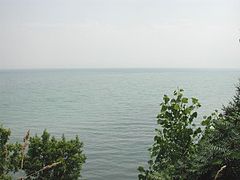 A black sealant sprayed on parking lots, driveways and playgrounds turns out to be the largest contributor to the rise of a toxic pollutant in urban lakes and reservoirs across America, according to a new U.S. Geological Survey study.
A black sealant sprayed on parking lots, driveways and playgrounds turns out to be the largest contributor to the rise of a toxic pollutant in urban lakes and reservoirs across America, according to a new U.S. Geological Survey study.
Scientists saw concentrations of polycyclic aromatic hydrocarbons (PAHs) going up rapidly in the 1990s in areas of urban sprawl. PAHs have been known as a probable human carcinogen since the 19th century, when cancer struck chimney sweeps, said Peter Van Metre, a USGS scientist and a principal author of the report. PAHs also are toxic to fish and other aquatic plant and animal life.
The research was based on sampling of sediments from the bottom of 40 lakes and reservoirs in commercial and residential areas in cities and suburbs typical of where most Americans live — not near old industrial sites. Among the cities tested were Anchorage, Alaska; Fort Worth, Texas; Portland, Ore.; Seattle; Orlando, Fla.; Raleigh, N.C., Chicago, Newark, N.J., Detroit; Milwaukee and Boston.
What was striking about the findings was that lakes that had high levels of PAHs also had a large fraction of those PAHs coming from coal-tar-based sealants. The opposite also was true — lakes that had low PAH levels also had a very low fraction of them from the sealant.
